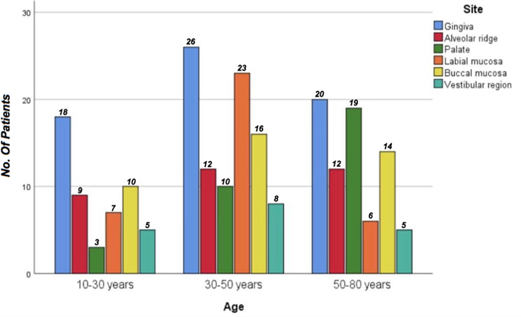Abstract
Reactive lesions are tumor-like growth and are non-neoplastic in nature. The external and internal stimuli give rise to reactive lesions. The aim of the study is to determine the prevalence and of the oral reactive lesions in an institutional setup. This is a single center cross-sectional retrospective study where records of patients with reactive lesions were collected from 86000 patients visiting Saveetha Dental College during the time period of June 2019 to March 2020. Descriptive statistical methods were used and recorded on data forms. The data were analyzed using SPSS, chi-square tests. 225 patients were identified with reactive lesions. 81(36.2%) patients had tobacco pouch Keratosis, followed by 59 (26.3%) patients with Keratosis. 144 (64%) patients were not wearing or using any prosthesis. However, 44 (19.6%) patients were using temporary partial dentures and 22 (9.8%) patients were using complete dentures. Of all the cases examined,168 (74.7%) were male 57(25.3%) were female. The most commonly affected anatomical site was the gingiva with 64 (28.4%) patients. A total of 155(68.9%) patients had poor oral hygiene Tobacco pouch keratosis is the most commonly affected lesion. Attention to policies about controlling and preventing tobacco and the risk of malignant transformation must be stressed. Early detection and treatment of reactive lesions by dentists can reduce dentoalveolar complications.
Full text article
Authors

This work is licensed under a Creative Commons Attribution-NonCommercial-NoDerivatives 4.0 International License.

